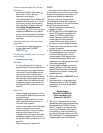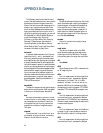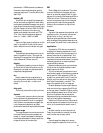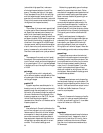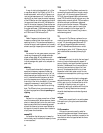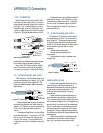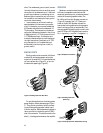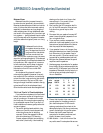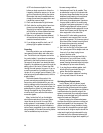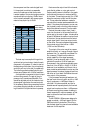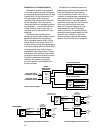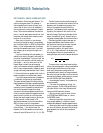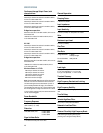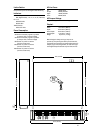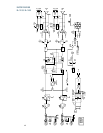
35
APPENDIX D: Arcane Mysteries Illuminated
sleeving on the drain wire (the one that
connects to pin 1) to prevent it from
contacting the connector shell.
2. Don’t connect the XLR connector shell to
pin 1 of the XLR connector. Doing so is an
invitation for a ground loop to come
visiting.
3. Do ensure that your speaker lines and AC
power lines are physically separated from
your microphone lines.
4. If you use floor pockets, use separate
pockets for inputs and speakers, or put the
connectors on opposite sides of the box so
that they may be shielded separately.
5. If your speaker lines run in the open, they
should be twisted pairs, at least 6 twists per
foot. Otherwise, run the speaker lines in
their own conduit. (Of course, conduit is not
too practical for portable systems, heh-heh.)
6. Minimize the distance between the power
amplifiers and the speakers.
7. Use heavy gauge, stranded wire for speaker
lines. Ideally, the wire resistance should be
less than 6% (0.5 dB power loss) of the load
impedance. Remember that the actual run
is twice as long as the physical length of
the run. See below.
Maximum wire run for 0.5dB power loss in feet
wire res. per 2 4 8
gauge 1000 ft. ΩΩΩ
10 1.00 60 120 240
12 1.59 40 75 150
14 2.5 24 48 95
16 4.02 15 30 60
8. Ensure that the electrician uses the star-
ground system for the safety grounds in
your electrical system. All of the audio
system grounds should terminate at the
same physical point. No other grounds may
come in contact with this ground system.
9. Ensure that the AC power feeds are
connected to the same transformer, and
ideally, the same circuit breaker.
10. Walk outside — look at the horizon. See
any radio towers? Locate potential sources
Balanced Lines
Balanced lines offer increased immunity
to external noise (specifically, hum and buzz).
Because a balanced system is able to minimize
noise, it is the preferred interconnect method,
especially in cases where very long lengths of
cable are being used. A long unbalanced cable
carries with it more opportunity for noise to get
into a system — having balanced inputs means
very little noise will enter the system via snakes
and other cables that typically must run a long
length.
A balanced line is a three-
wire system where two wires
carry the signal and the third
is a ground wire that shields
the inner conductors from
EMI. The two inner conductors carry the same
signal, but with opposite polarity. The balanced
input amplifies only the difference between the
two conductors. But a signal that is common
to both conductors, and in phase, is rejected
(canceled out) at the balanced input. This
includes hum from AC lines or other EMI
induced noise.
An unbalanced line does not have this
noise-rejecting capability because it has only
two conductors. One conductor carries the sig-
nal and the other is a ground wire that shields
the inner conductor. Any hum or EMI noise
that gets through the shield is added to the sig-
nal and amplified at the unbalanced input.
Often the hum can be louder than the signal itself!
“Do’s” and “Don’ts” of Fixed Installations
If you install sound systems into fixed instal-
lations, there are a number of things that you
can do to make your life easier and increase
the likelihood of the sound system operating
in a predictable manner. Even if you don’t do
fixed installations, these are good practices for
any sound system.
1. Do use foil-shielded snake cable for long
cable runs. Carefully terminate each end,
minimizing the amount of shielding
removed. Protect the exposed foil shield
with shrink sleeving or PVC sleeving.
Prevent adjacent shields from contacting
each other (electrically). Use insulating



